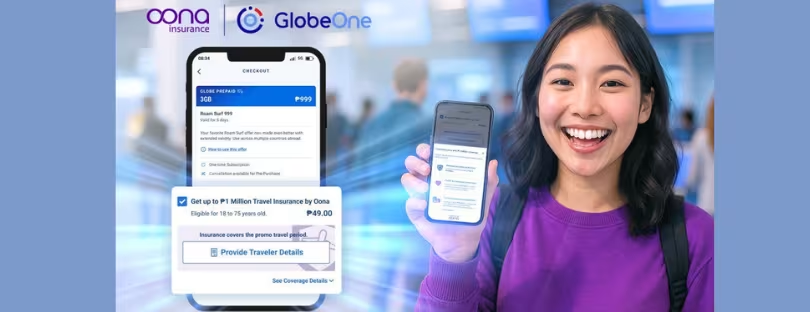
Know Roaming to Make Smarter Mobile Choices
When we travel abroad, our phones become essential tools for staying connected. We use them to navigate, stay in touch with friends and family, book accommodations, and share our experiences on social media. But how often do we pause to think about the roaming terms that govern our phone usage while abroad? How much do we really know about roaming and roaming terms?
Chances are, we use most of these terms—like roaming charges, local SIM cards, or data roaming—without truly understanding what they mean.
Understanding these terms can be crucial in preventing expensive surprises on your mobile bill after returning home from a trip. While the technology behind roaming services may seem complex, know roamng a few key terms can help you make smarter choices when it comes to international connectivity. Whether you’re using your phone to browse the web in a foreign country, make international calls, or rely on mobile data for directions, understanding roaming concepts can directly impact how much you pay for these services.
If you’re someone who travels often or plans to travel soon, getting acquainted with the nuances of roaming—such as how data roaming works, what eSIM is, and what to expect with things like VoLTE roaming—can help you avoid unnecessary costs and even enable you to access cheaper, more efficient alternatives.
Here’s a breakdown of essential roaming terms you should know to ensure you’re making the most informed decisions, saving money, and staying connected while traveling.
1. Roaming
Roaming refers to the ability to use your mobile phone on a different network when traveling outside your home country. Your provider partners with foreign networks to offer services like calling, texting, and data usage.
2. Data Roaming
Data roaming specifically refers to the use of mobile internet services (e.g., browsing, apps, email) while you are outside your country. This is often where travelers face high charges, so understanding your plan is critical.
3. Roaming Charges
These are additional costs incurred for using your phone outside your provider’s network. Roaming charges may apply to calls, texts, and data usage and can vary significantly depending on your provider and destination.
4. Home Network
Your home network is the network of your service provider in your country. When you’re roaming, your phone connects to a foreign network, but charges may be applied by your home network.
5. International Roaming Plan
Many mobile carriers offer international roaming plans or packages. These plans are designed to reduce the cost of using your phone abroad, offering discounted rates on calls, texts, and data.
6. Local SIM
Instead of using your home provider’s roaming services, travelers can opt to use a local SIM card. This means swapping your SIM for one from a local carrier in the country you’re visiting, allowing you to access local rates.
7. eSIM
An eSIM is a digital SIM embedded in your phone. It allows you to activate a mobile plan without needing a physical SIM card. eSIMs are particularly useful for travelers, enabling quick transitions between local and international plans without changing cards.
8. Fair Use Policy
Some carriers have a “fair use” policy for roaming, especially within regions like the EU. It prevents customers from using more than a certain amount of data or services while roaming, ensuring that domestic plans aren’t abused abroad.
9. Network Locking
A phone locked to a particular network cannot use a SIM card from another provider. If you’re traveling internationally and want to switch to a local or international SIM, your phone needs to be unlocked.
10. 4G/5G Roaming
As mobile networks evolve, many travelers want the speed of 4G or even 5G while abroad. However, whether you have access to these networks depends on your provider’s agreements with foreign networks and the technology available in your destination.
11. Dual SIM
A dual SIM phone allows for two SIM cards to be active at once. This feature is useful when you want to keep your home number active for incoming calls and texts while using a local SIM for cheaper data and local calls.
12. Wi-Fi Calling
Wi-Fi calling allows you to make calls and send texts over a Wi-Fi connection instead of using your mobile network. This feature is great for travelers, as it can bypass roaming charges when you’re connected to a Wi-Fi network.
13. Mobile Hotspot
A mobile hotspot allows your phone to share its data connection with other devices, such as laptops or tablets. If you’re on a roaming plan with sufficient data, this can be a useful way to stay connected while traveling.
14. International Roaming Agreement
This is an arrangement between mobile carriers across countries that allows users to connect to foreign networks. It’s this agreement that makes roaming possible.
15. Call Forwarding
Some travelers use call forwarding to route incoming calls to a local number or a VoIP service like Skype or Google Voice, avoiding roaming charges for incoming calls.
16. VoLTE Roaming
VoLTE (Voice over LTE) roaming allows you to make high-quality voice calls over a 4G LTE network while abroad, rather than dropping to older 2G or 3G networks. VoLTE roaming provides clearer voice quality, and faster call connection times, and can help conserve battery life. However, VoLTE roaming depends on both your home carrier and the roaming network supporting the feature, so it’s worth checking availability before you travel.
Adding VoLTE to your roaming plan can be a game-changer for business travelers or those needing reliable call quality on the go.
17. Roaming Cap
A roaming cap is a limit set by your mobile provider on the amount of data, calls, or texts you can use while abroad before additional charges are applied. Some providers automatically apply a roaming cap to prevent users from racking up large bills, while others may require you to manually set the cap. Understanding your provider’s roaming cap can help you manage your usage and avoid overage charges.
18. Global Roaming
Global roaming refers to the ability to use your mobile phone on networks in multiple countries around the world, typically under one international roaming plan. With global roaming, your carrier may provide coverage in several regions, often offering package deals for roaming in many countries, rather than individual arrangements for each country you visit.
19. Roam Like at Home
A term used in the European Union (EU) that allows EU citizens to use their home mobile phone plan (for calls, texts, and data) at the same rates as they would within their own country when traveling within other EU countries. This policy was introduced to eliminate “roaming charges” within the EU, making travel much more affordable for Europeans. Many countries outside the EU are beginning to adopt similar “Roam Like at Home” programs.
20. SIM Card Swap
A SIM card swap involves replacing the SIM card in your phone with one from a local carrier in the country you’re visiting. This gives you access to local rates and can help you avoid expensive international roaming fees. While this option can be cost-effective, it often requires you to switch out your home carrier’s SIM card, which can be inconvenient if you want to keep your home number active for calls and texts.
21. Airplane Mode
Airplane mode, also known as flight mode, is a setting on mobile devices that disables all wireless communication, including cellular, Wi-Fi, and Bluetooth connections. While it’s primarily intended for use during flights (to comply with airline safety regulations), it can also be a useful tool for managing roaming costs.
When traveling internationally, turning on airplane mode helps prevent your phone from accidentally connecting to foreign networks and incurring roaming charges. Once airplane mode is activated, you can manually enable Wi-Fi to use internet services when connected to a Wi-Fi network, avoiding roaming fees associated with mobile data.
For those concerned about roaming charges but still needing connectivity, airplane mode can be a simple, effective way to control when and how your device connects to roaming networks. It also ensures that your phone won’t be used to make or receive calls and texts while abroad without your knowledge.
Conclusion: Know Roaming to Make Smarter Mobile Choices
Navigating the world of roaming can be overwhelming, especially with so many terms and options to consider. However, understanding key roaming terms like VoLTE roaming, data throttling, or the benefits of global SIM cards can be the difference between an affordable trip and a costly surprise when you return home. By familiarizing yourself with these terms, you empower yourself to make smarter decisions about mobile connectivity while abroad.
Whether you’re a frequent traveler, a digital nomad, or someone taking an occasional holiday, know roaming and how to manage roaming charges, as well as choosing the right plans and services, can help you save money, stay connected, and enjoy your travels without the stress of unexpected mobile bills. As the roaming landscape evolves with technologies like eSIM and international data passes, staying informed ensures that you’re always ahead of the curve, making the most of your mobile experience wherever you go.












